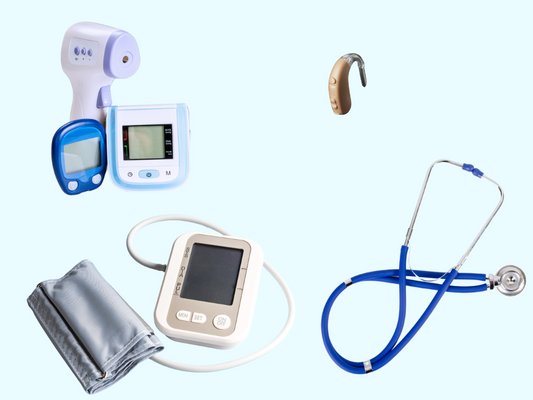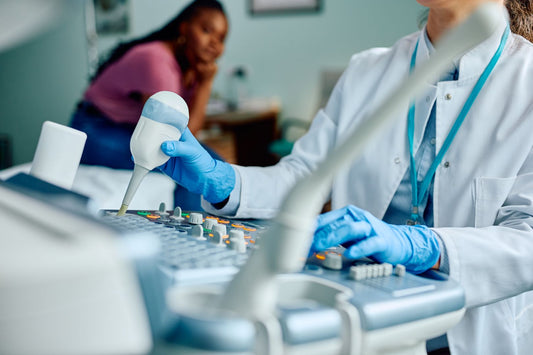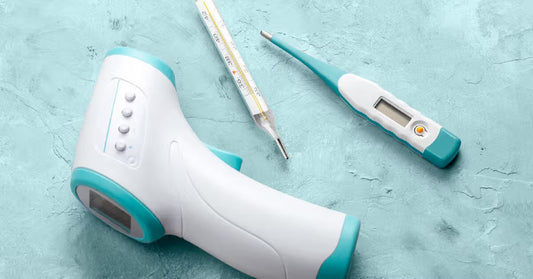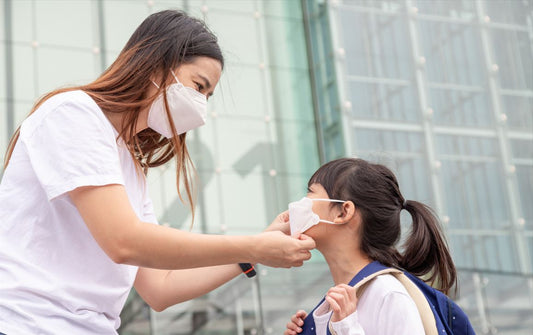
What is the difference between Level 1, 2, and 3 Face Masks?
Are you seeking the perfect face mask for your lab work or routine protection? There are so many options, so don’t just go for the cheapest face masks; instead, choose wisely. Take your time to find a mask that suits your needs. This way, you will ensure you are getting the best possible protection.
Generally, the masks we wear in our routine are surgical masks. These masks are rated by ASTM, which sets technical standards for different materials, known as levels. You should know the difference between these levels and which level you will use. So today, we will give you peace of mind by providing information about the different levels of protection you will have, whether you work in surgery, pathology, or research.
What are Level 1, 2, and 3 Face Masks?
As we have stated earlier, these levels are defined by the American Society for Testing and Materials (ASTM). ASTM-rated masks are generally categorized into three levels, “Level 1″, “Level 2”, and “Level 3”. Each level provides a different level of protection against airborne particles and viruses. This number is commonly used to classify surgical masks depending on fluid resistance and particle filtering efficiency.
Level 1 Disposable Face Masks: These masks offer the lowest level of barrier protection among surgical masks. They are designed for non-hazardous situations with minimal fluid exposure risk, such as during specialized tests and procedures. They have low barrier protection and are suitable for use in healthcare settings.
Level 2 Disposable Face Masks: Face masks in Level 2 Canada provide moderate barrier protection and are designed for moderate-risk conditions involving light and drainage, such as procedures involving light holes and minimal drainage it offers superior protection compared to Level 1 masks.
Level 3 Disposable Face Masks: ASTM level 3 masks provide maximum barrier protection and are designed for high-risk situations involving exposure to heavy liquids, such as during surgical procedures with a high risk of exposure to blood or other bodily fluids. They offer the highest level of protection among surgical masks.
Although these masks provide varying levels of protection against water and particles, they are not designed to protect against air, vapor, or specific airborne contaminants as found in the vicinity of certain hazardous industries or areas.
| Feature | Level 1 | Level 2 | Level 3 |
| Protection level | Low | Moderate | High |
| Filtration efficiency | 95% large particles | 99% large and some small particles | 98% very small particles |
| Fluid resistance | Minimal | Moderate | High |
| Applications | General public, low-risk settings | In high-risk settings, some medical procedures | Surgical procedures, high-risk aerosols |
Testing Metrics for Face Masks
Face masks undergo rigorous testing using various metrics to ensure their effectiveness in protecting us from airborne particles. These few testing metrics below are crucial in evaluating a mask’s performance and guiding manufacturers, regulators, and consumers in making informed decisions.
1. Filtration Efficiency:
The first important metric is the mask Filtration efficiency. Particle filtration efficiency (PFE) and bacterial elution efficiency (BFE) tests are usually used to measure the ability of a mask to remove particles of a specified size. As the name implies, The PFE examines the ability of the mask to remove airborne particles, while the BFE measures its effectiveness against airborne bacteria. Excellent water filtration means the mask can effectively block harmful particles, increasing the level of protection.
2. Breathability:
Breathability is another essential aspect of mask testing, as it checks the permeability of viscous air through the mask material. A highly breathable mask allows users to breathe comfortably without suffocation. Breathability testing techniques include measuring the pressure drop across the mask material to determine how easily air can pass. Low-pressure masks are considered more breathable and preferred for long-term use.
3. Fluid Resistance:
Fluid resistance tests determine the mask’s ability to repel liquids such as blood or body fluids that can cause infection. This test is important for surgical masks and other medical masks in health conditions where body fluids are likely to be exposed. The highly resistant cover provides an additional level of protection against spills and splashes, reducing the risk of contamination.
4. Fit Testing:
Mask also undergoes Fit testing evaluation. This tests how well a mask seals around the user’s face. Fit testing ensures that air passes only through the filtration material and not through gaps between the mask and the face. It is especially important for respirators, such as N95 masks, which require a tight seal to protect against airborne particles. Fit testing methods include qualitative and quantitative techniques to assess the mask’s fit and seal adequacy.
5. Biocompatibility:
Biocompatibility testing assesses the mask’s compatibility with the human body, particularly its potential to cause skin irritation or other adverse reactions. This testing is essential for masks intended for prolonged use, as it ensures that the materials used in the mask are safe and non-irritating to the skin. Biocompatibility testing involves evaluating the mask’s contact with skin and mucous membranes to determine its safety for human use.
6. Flammability:
Flammability testing determines how easily a mask can catch fire or sustain combustion. While this may not seem directly related to a mask’s protective function, it is crucial for ensuring the safety of users, especially in environments where there is a risk of exposure to flames or flammable substances. Masks with low flammability are safer to use and less likely to pose a fire hazard.
7. Static Charge:
Some masks, particularly those with electrostatic filtration materials, rely on a static charge to attract and trap particles. Testing for static charge assesses the mask’s ability to maintain this charge over time, ensuring continued effectiveness in filtering out particles. Masks with a stable static charge exhibit consistent filtration performance, making them reliable for extended use.
8. Durability and Shelf Life:
Durability testing evaluates a mask’s ability to maintain its structural integrity and performance after repeated use or exposure to environmental conditions. It assesses factors such as material strength, elasticity, and resistance to degradation, which are crucial for determining a mask’s lifespan and suitability for long-term use. Shelf-life testing, on the other hand, determines the period for which a mask can be stored before its performance begins to deteriorate, ensuring that masks remain effective until their expiration date.
Wrap Up!
In summary, when it comes to face masks, testing involves looking at many different factors that together determine how well a mask works, how safe it is, and how easy it is to use. By checking these things, companies can make sure their masks meet the right standards for keeping people safe. This helps regulators and customers pick masks that are up to scratch. As more and more people need face masks, having strict rules for testing and standards will be important to make sure these masks do the job they’re supposed to. Check the mask with the ASTM level and water resistance printed on the box. This information is necessary for the mask to meet Australian standards and regulations. Thank you for reading.







